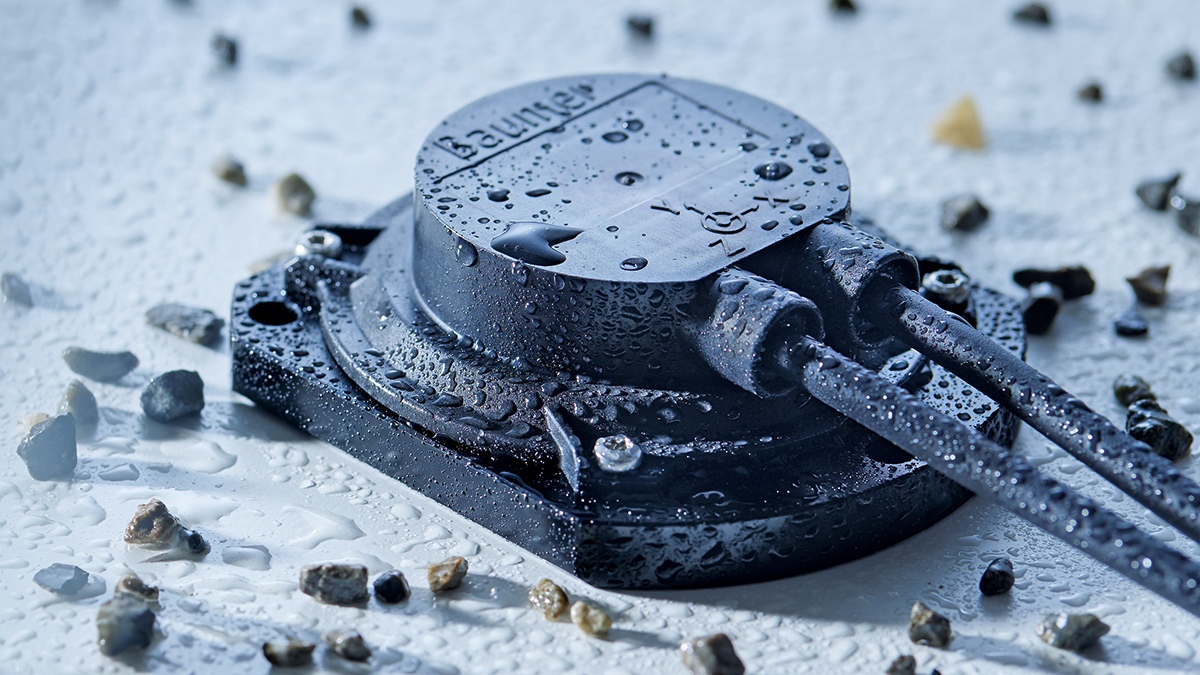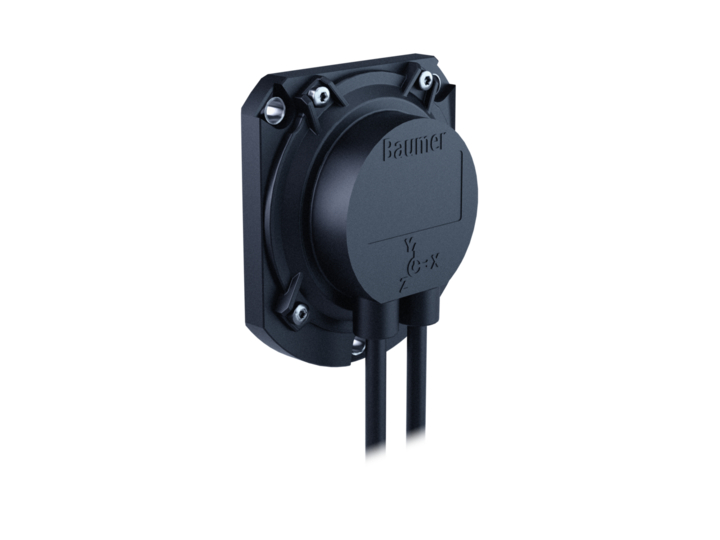Baumer Launches GIM600R Inclination Sensor for Mobile Machinery
Like smacking a pinball machine, Baumer's new GIM600R inclination sensor gives users a competitive edge. The sensor brings improved performance to mobile machines, regardless of harsh environmental conditions.
Baumer has developed a high-precision inclination sensor for mobile and off-road machinery. The new GIM600R can sense both inclination and acceleration, making it a useful tool for numerous construction, transportation, and shipping applications.

Baumer’s GIM600R inclination sensor for use on mobile machinery in harsh environments. Image used courtesy of Baumer
What Is an Inclination Sensor?
Inclination sensors are devices that can measure the tilt of an object. Like the sensors buried in pinball machines to determine whether the machine has been tilted, inclination sensors can provide feedback on how far an object has moved out of level. They can be used as an electronic level, ensuring an object is parallel to the ground. Inclination sensors vary in design, outputting a voltage or current corresponding to an angle, or a simple binary signal indicating whether a surface is level.
Inclination sensors can be used in one dimension or two dimensions. Think of a one-dimensional inclination sensor as a standard level, used to see if a 2x4 is level at a construction project or if a picture is hung on the wall correctly. A two-dimensional model can show whether an object is level in two directions.

More than one cheater has pushed the pinball machine to make the ball roll favorably. A “tilt” sensor became a common addition to these machines and would disable the paddles if the machine was jostled too hard. Image used courtesy of Adobe Stock
GIM600R Inclination Sensor
Available in one-dimensional and two-dimensional models, the GIM600R inclination sensor can be easily accessed using a CANopen / SAE J1939 interface and Baumer Sensor Suite freeware. The one-dimensional model can detect a tilt from 0 to 360 degrees, while the two-dimensional model can detect a tilt from -90 to 90 degrees.
These sensors have been designed for rugged, outdoor, off-road use. They are virtually immune to shock, dust, moisture, vibration, and other common contaminants and conditions that can destroy sensors. Rated to IP69K level (ingress protection) and corrosion level CX, they were built for heavy construction equipment, vehicle instrumentation, and other physically and chemically challenging environments.

The GIM600R provides static stability control in construction, transportation, and shipping applications. Image used courtesy of Baumer
Stability Control in Mobile Machinery
The GIM600R will see use in numerous construction, transportation, and shipping projects. Inclination sensors can be used to ensure that a grader is applying the proper angle to a road surface, enough pitch to allow the road to drain properly, or enough of a barrier for cornering at highway speeds.
They could also be used as a feedback mechanism in vehicle stability control systems. A vehicle that is tilting too far on corners can quickly lose traction on one or more tires, so enabling some sensors that can detect this and adjust the braking, acceleration, and steering can help prevent accidents.
The shipping industry may also be interested in data from the GIM600R sensors. From determining the position of a crane boom to characterizing the tilt of a shipping container during transport, these sensors could help provide some quality assurance data for shipping companies. Because they can report both tilt and shock (acceleration), they can tell shippers which loads may be damaged during transit.

 Facebook
Facebook Google
Google GitHub
GitHub Linkedin
Linkedin








